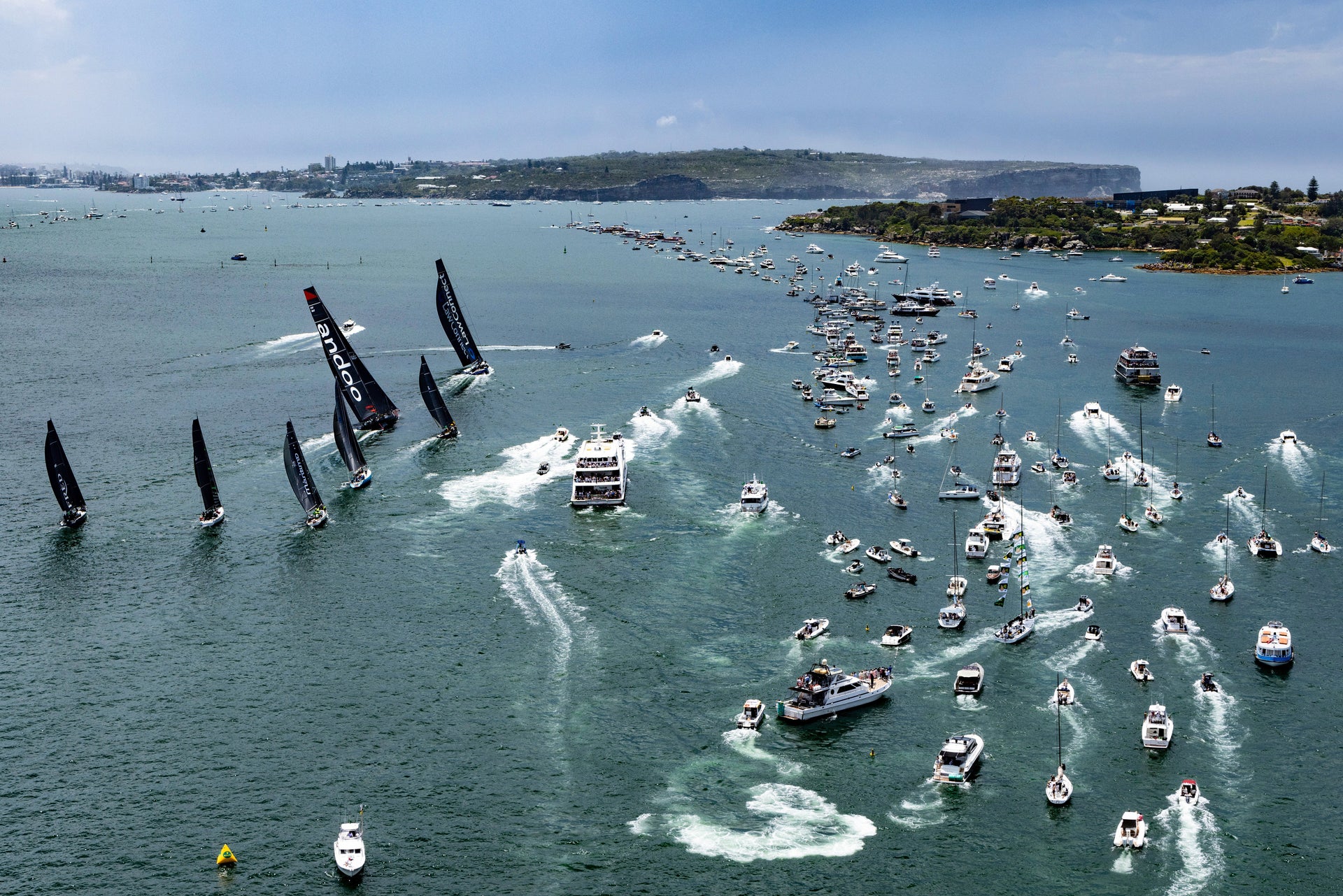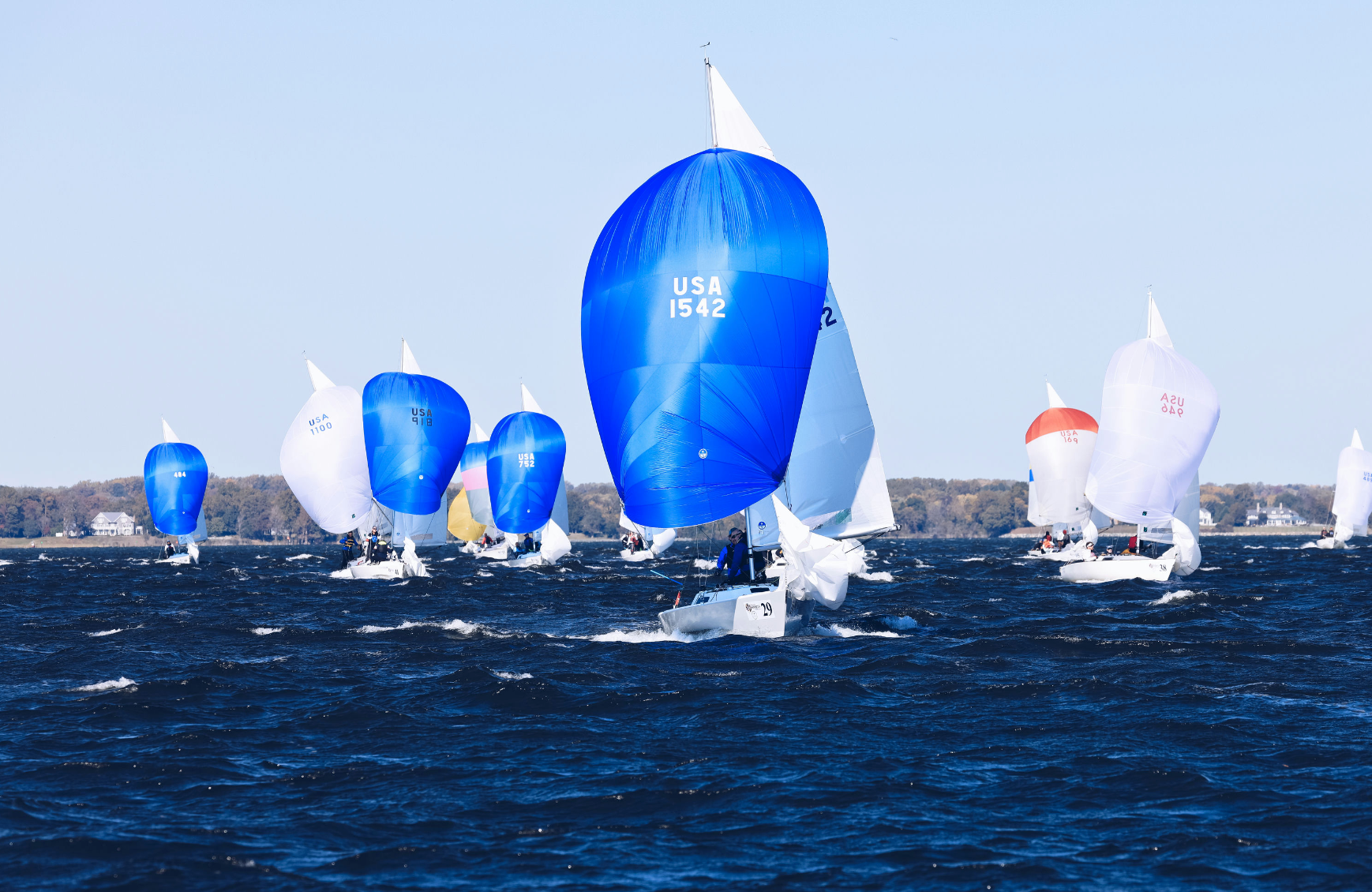AMERICA'S CUP FIRST IMPRESSIONS
Did you watch the America's Cup Preliminary Regatta? Our debrief with Ken Read
A new generation of foiling boats is catching the world's attention. The Moth, 69F, Flying Nikka, and various catamarans sailed in previous America's Cups. And now, the AC40 one design, which we saw line up for their first event during the America's Cup Preliminary Regatta in Vilanova i La Geltrú, Spain.
In a sport known for tradition but also innovation, this new discipline is capturing the imagination and piquing the interest of our core audience and non-sailors alike. Let's talk about this first Preliminary Regatta. From my days of sitting in the commentary booth, as well as my days of sailing in America's Cup trials, weather plays a major role in any sailing event, and the America's Cup is no exception. Is there a Cup weather curse? If this past weekend is evidence, you'd believe there's some truth to support the idea. Boats up on their foils prior to the start, only to watch the wind evaporate before they launch off the line. Sure, there's a bit of irony in the fact that when the boats do crash down off their foiling, we have displacement sailing, and it's essentially a regular old boat. Can we all agree foiling adds a bit more excitement to our lives?

In the light conditions, I guess there is the anticipation of a boat or two getting up on their foils and making wild comebacks from way behind. I'd like to see someone sit down with the weather gods and create a regatta calendar that works in more favorable conditions. It sounds easy from the spectator's standpoint, but having bottom-end wind ranges, and even top-end wind ranges, that aren't sailable because of specific America's Cup rules still needs to be thought of hard and widened. When boats are open ocean racing around the world, there's no such thing as stopping for weather. Too light or too heavy, you have to make the best of it. I would like to see all these America's Cup-style boats have a wider wind range to make the sailing more compelling. How could that happen? Well, consider smaller sails in heavy air and bigger sails in light air. Or smaller rigs and bigger rigs. There's no question that SailGP has made efforts to alleviate this made-for-television weather problem with their really big rigs in the light and tiny, tiny rigs in the breeze. It would be great to see the America's Cup take that on, maybe a bit more aggressively in the future.
So what are these Preliminary Regattas good for? Teamwork extends beyond the sailing team, and these events are great for learning the process, from the shore crew to the coaching staff. For sailors, communication is key, syncing one side of the boat with the other and getting things done without speaking a word, especially with permanent drivers on each side. And no question, this particular regatta was very good at teaching teams that if you think seven knots is your minimum wind strength to get the boat foiling, you'd better find a way to cut that down to six. I am sure every team took away a laundry list of ideas and tweaks to get foiling faster.

The tactics and strategy of sailing in these tight racecourses can never be practiced enough. But, for the most part, the Preliminary Regattas, compared to the America's Cup, are fleet racing versus match racing and one design versus custom design. The one design nature of these boats offers great racing for the fans but probably isn't teaching the teams very much with regards to making their AC75 faster for the future. And as we have said and seen a million times, always bet on the fastest boat winning the America's Cup.
It was very clear to me which teams have been training and practicing hard in the AC40s and those who are using the training time to develop their new AC75s. Both on the aero and hydro side, foil development will win the next Cup. It would be naive to think that the Brits, for example, are way behind just because they had a bad result at this regatta. All that showed me was that they have been working on speed development far more than they've been training to get an AC40 around the racecourse. You can make the same case for the Italians, who we know are a bunch of spectacular foiling sailors but have prioritized time on test boat over sailing the AC40. On the other hand, the Americans and the Kiwis have logged more hours in their AC40s; each team owns two boats, and it showed. It will be fascinating to see which strategy works best when the next generation of AC75s hit the water in 2024.

Finally, the AC40s and the Kiwis' concept for the Preliminary Regattas is a real help to their program. We all watched the last America's Cup, where the Defender came out of the blocks in the finals against Luna Rossa Prada Pirelli a bit stagnant. As they always do, the team got better and better as the event progressed, but it was clear that the Challengers were hardened and race-ready after weeks of competition, and the Kiwis needed some time to be "race-ready." It could have cost them the America's Cup 36 held in Auckland. So what do they do? They develop a class allowing them to two-boat race training and offer an excuse to race against everybody else, effectively alleviating the Kiwi's potential Achilles heel. This AC40 class is certainly going to help them develop pre-start strategies and overall race course management strategies far better than what they had in the America's Cup 36 in New Zealand.
It will be fun to watch this unfold and, as all armchair sailors do, second guess and see if our predictions materialize. Because if there's one thing that's a hundred percent sure about an America's Cup cycle, it's that everybody and every team has a different vision, which they feel is best until the victor comes to the spoils. History shows the fastest boat wins the America's Cup, but that may change someday.



























